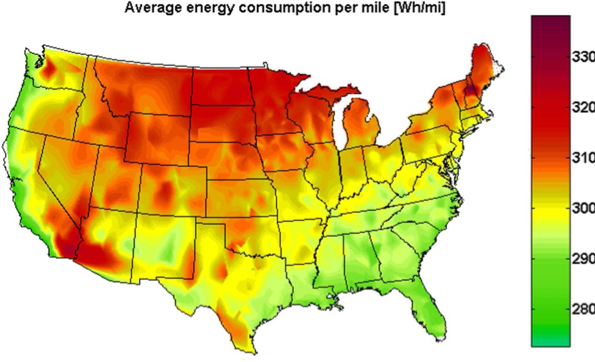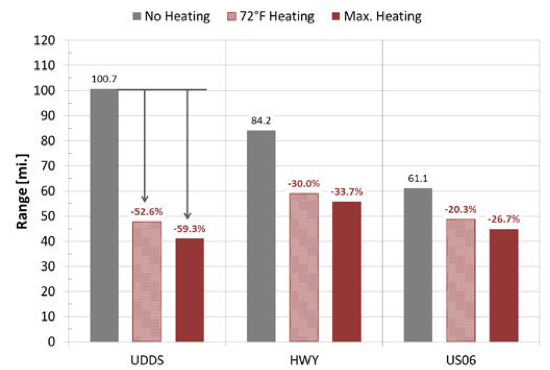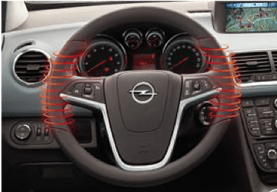Electric cars accounted for 2.6% of global car sales and about 1% of global car stock in 2019. They manifested a 40% year-on-year increase. As the electrification of ATVs, buses, and trucks progresses, the market continues to grow. Ambitious policies have been critical in stimulating the electric vehicle rollout in influential markets in recent years. This shift continues—including zero-emission vehicle mandates and fuel economy standards —which have set clear, long-term signals to the automotive industry and consumers that support the transition (IEA).
Consumers' adoption of electric vehicles (EVs) is also related to:
- range satisfaction
- public and private charging infrastructure
- vehicle purchase price compared to internal combustion engine vehicles
- maintenance costs
- reasonable thermal comfort inside the vehicle
The HVAC System’s Influence on Vehicle Range
An electric vehicle's range is strongly influenced by temperature, the battery type, and what HVAC loads are required to bring the cabin to comfort. Heating and cooling are some of the most significant contributors to range reduction. Climate control loads can cause a 17-34% difference in summer when using the A/C or 17-54% difference in winter when the heater is in use.

Energy consumption per mile averaged across a fleet of Nissan Leaf EVs over a full year. (Environ. Sci. Technol. 49, 2015.)

Impact of cabin heating on EV driving range in 20F ambient
Active Technologies for Increased Efficiency
To make HVAC systems more efficient for electric vehicles, you can use several active technologies for improvement.
- Use heat pumps to capture energy from the atmosphere to heat the cabin (about 3x more efficient than electrical heaters)
- Use localized heating and cooling technologies
- Use ambient air circulation even when the vehicle is not in use
Capturing Energy for Heating the Cabin
Resistive Heater
The most straightforward adaptation of an internal combustion engine (ICE) HVAC system for electric vehicles is to use a resistive heater and an electric refrigerant compressor for cooling. With this method, some heat can be recovered from the electric motor, but it causes a 50% reduction in range. This method is simple, but not very efficient, and that's why, as an industry, we’ve continued looking for something better.
Positive Temperature Coefficient Heater
Alternatively, you could use a Positive Temperature Coefficient (PTC) heater. These provide rapid, noiseless warming of cabin and windshield defrost, independent of waste heat. Due to their self-regulating capabilities, they are slightly more efficient than resistive heaters. They can provide enough heat to the cabin for comfort, but they still draw on the vehicle's battery substantially and are not sufficient for most consumers' range expectations. For example, at -7C, it can take 6kW of power to heat the cabin, which is about the same energy needed to propel a small vehicle at 50km/h.
Heat Pumps
Currently, heat pumps are the best option for energy efficiency and increased range as power consumption can be ~1/3 of PTC heating systems of the same capacity. The disadvantage is that heat pumps are slow warm-up compared with PTC heaters. However, you could use a PTC heater to supplement the heat pump for faster time-to-comfort.
Heating or Cooling Critical Areas for Energy Efficiency
It takes a considerable amount of energy to heat or cool an entire cabin environment. Passenger comfort achieved through a localized thermal comfort strategy takes less energy than HVAC alone. It uses a targeted approach, such as heated steering wheels or active seats, to bring some of the more critical body segments to comfort. With less energy diverted to heating or cooling the cabin, more power can be used to increase the range of an electric vehicle.

|

|

|
Design with the Passenger in Mind
Because the comfort of the customer plays an integral role in their impression and overall satisfaction, not only do EV manufacturers have to ensure range requirements but also answer, "Is the cabin comfortable?" The cabin environment is unique, and many factors contribute to the passenger’s comfort (or discomfort). Whether the occupant is warm from solar loading from a glass roof or they seek warmth from their heated steering wheel on a cold, winter morning, human thermal sensation and comfort are vital in designing the elements of an EV cabin.
What humans experience is complex, and a lot of what we deem "comfortable" has to do with what we have recently experienced. After walking through a bitter-cold, snow-filled parking lot, a person who enters their car will feel differently about 15C than someone who is returning to the car after a hike in the Sedona mountains. To make an impact on consumers, automotive manufacturers will need to adjust their HVAC strategy to be in tune with the complexity of their customer's experiences. Using an HVAC simulation software to simulate the thermal experience of occupants will help you design the optimal time-to-comfort and range trade-off.

Hepokoski, SAE TMSS 2018, session TMSS200
Using the active technologies described, OEMs extending electric offerings have several design objectives in mind:
- Reduce energy consumption
- Balance occupant comfort and vehicle range
- Shorten time-to-comfort
- Maintain comfort
Several thermal simulation methods can assist you as you seek the optimal design solution. Picking a system-level or large-scale simulation method can also be a bit of a balancing act as you choose between accuracy and reduced computational effort.
A stand-alone single fluid node has low accuracy but is quick to compute. You could add multiple fluid nodes for increased accuracy, which will also slow computation time. A 1D coupling method would increase your accuracy further (20-10K cells), followed by a CFD coupling strategy with millions of cells. Lastly, you can couple your thermal-CFD results with a Manikin to verify your thermal simulation results with test data for occupant comfort. Multiple methods can improve accuracy throughout the process as the design is refined, and an increase in computational time makes sense.
We ran a case study to see what active technologies and methods worked to create an optimal design. We set up the study using:
- 3D full-vehicle thermal model using TAITherm
- Human Thermal Extension for thermal signature predictions
- Energy usage optimization using CoTherm
Three cases were considered with variable power to the heating sources.
- HVAC only with foot heaters
- HVAC only with panel heaters
- HVAC with localized heating (radiant panels, seat heater, and a steering wheel heater)
Our engineer set up the thermal model in TAITherm with the appropriate heating sources. They then created an optimization process using CoTherm to vary the heating inputs, such as the HVAC, heated seat, or radiant panel. The engineer varied the amount of power to each heat source to strategize the cost function: to adjust the heat sources until the person is comfortable at 5 minutes. If the minimum value is not what they want, they tune the optimization by changing some parameters or constraints until the process can derive the optimal solution. There is a penalty if the person is comfortable before or after 5 minutes. Being comfortable before 5 minutes would mean we are expending more energy than desired. Comfortable after 5 minutes indicates the time-to-comfort is too slow for this case.
This process could look at various scenarios using different cost functions. You could look at how long it takes to get an occupant to comfort or how comfortable the occupant is over time.
From the results, we can see that the model with localized heating sources meets the cost function the best, retains comfort for the occupant over time, and saves energy, increasing the range for the electric vehicle.

Simulation can improve an OEM's design process, saving time, money, and unnecessary risk. It can also help engineers design a better vehicle that will exceed customer expectations through increased comfort and range. If you want to learn more about how thermal simulation with an optimization process can help your team, request a live demo of our thermal analysis software.

Visit our website at suppport.thermoanalytics.com for
- FAQs
- Webinars
- Tutorials
Get help from our technical support team:
Sources:
- Global EV Outlook 2020 – Analysis - IEA. https://www.iea.org/reports/global-ev-outlook-2020
- Energy Consumption per Mile Averaged across a Fleet of Nissan Leaf EVs over a Full Year. Environmental Science and Technology, 2015.
- Hepokoski, Mark. Driver Sensation and Equivalent Temperature. SAE TMSS, 2018.

